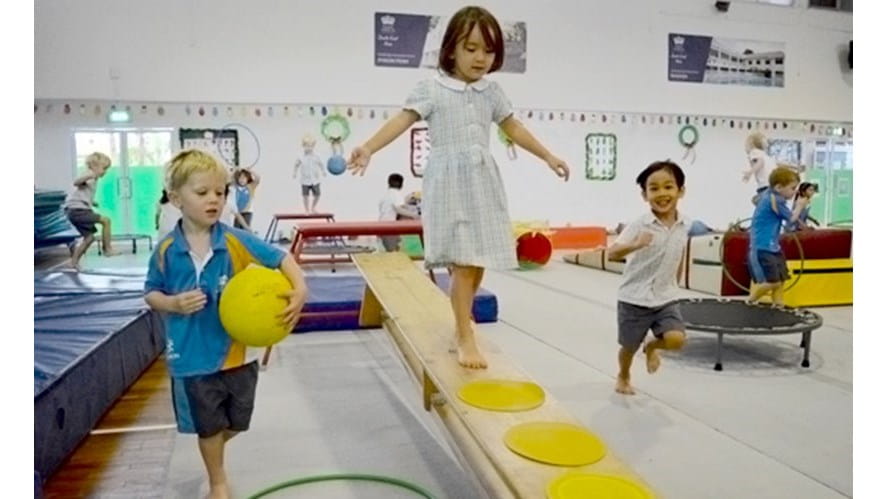We use cookies to improve your online experiences. To learn more and choose your cookies options, please refer to our cookie policy.
Admissions to 2025-2026 are now open
Secure your child's future today!

Balance is the ability to maintain a controlled body position during task performance, whether it is sitting at a table, walking the balance beam or stepping up onto a kerb. To function effectively across environments and tasks, we need the ability to maintain controlled positions during both static (still) and dynamic (moving) activities.
Developing balance and coordination begins almost at birth. As babies develop, they learn to lift their head, roll over and scoot across the floor. Eventually, when babies turn into toddlers, their balance and coordination develops more quickly as they begin to crawl, walk, skip, jump and run. During these developmental stages, children typically become involved in more complex and difficult activities on the playground and at home that help them in their growth and development. However, when a child has developmental delays and fails to improve their balance and coordination skills over time, they may experience gaps in learning.
With good balance and coordination, the child is likely to have appropriate postural responses when needed. The physical attributes of balance and coordination also allow appropriate posture for table top tasks and subsequent success at fine motor tasks.
Many parents do not always understand how balance and coordination is connected to their child’s learning process. Most of these skills come naturally for many children but, for those who fall behind, it can have a direct impact in the classroom. Children that experience trouble with body awareness, balance and coordination, crossing the midline and core muscle tend to struggle with focus and attention in school.
Balance is a fundamental tool needed for controlled positions, such as sitting in a chair, so children tend to have trouble focusing on academic tasks when these skills are not properly developed. These students we often demonstrate more fidgeting, poor posture and lack of fact retention as they listen to the teacher. At many times, the teacher or parent has a difficult time giving the child instructions or directions and has to repeat themselves before tasks are completed. The child has to focus so much on keeping their body calm and “still” while sitting at their desk that their brain doesn’t have the “space” available for learning.
Falls easily, trips often or can’t ‘recover’ quickly from being off balance.
Had developmental delays as a baby or a toddler.
Moves stiffly and lacks fluid body movement (e.g. runs like a ‘robot’).
Avoids physical activity (e.g. playground use, sports participation).
Is slower than their peers to master physical skills (e.g. bike riding, swimming or tree climbing).
Is less skilful than their peers in refined sports participation (e.g. team sports).
Pushes harder, moves faster or invades the personal space of others more than they intend to.
Is fearful of new physical games (e.g. swings) or is scared of heights that do not faze their peers.
Has difficulty getting dressed standing up (e.g. they need to sit down to put on pants as they lose their balance when standing on one leg).
Has trouble navigating some environments (e.g. steps, kerbs, uneven ground).
Balance and Coordination development activities
Unstable surfaces: Walking over unstable surfaces (e.g. pillows, bean bags or blankets on the floor) that make the trunk work harder to maintain an upright position.
Animal walks, jump rope, roll down a hill (and other challenging gross motor training tasks).
Unstable swings and moving games including suspended climbing ladders and jungle gyms. When swings move in unexpected ways it forces the trunk muscles to work harder.
Wheelbarrow walking (the child ‘walking’ on their hands while an adult holds their legs off the floor).
Swimming: Involves the body having to work against resistance of the water thus providing better awareness of where the body is in space.
Kneeling (with no hands touching the floor) to tap a balloon back to another person.
Hopscotch: Requires the child to switch movement patterns frequently and rapidly.
Stepping stone games with big jumps (i.e. no steps between the ‘stones’) challenge a child’s balance.
Bike and scooter: Both activities require the child to continually make postural adjustments to maintain balance.
Andre de Sousa
Physiotherapist